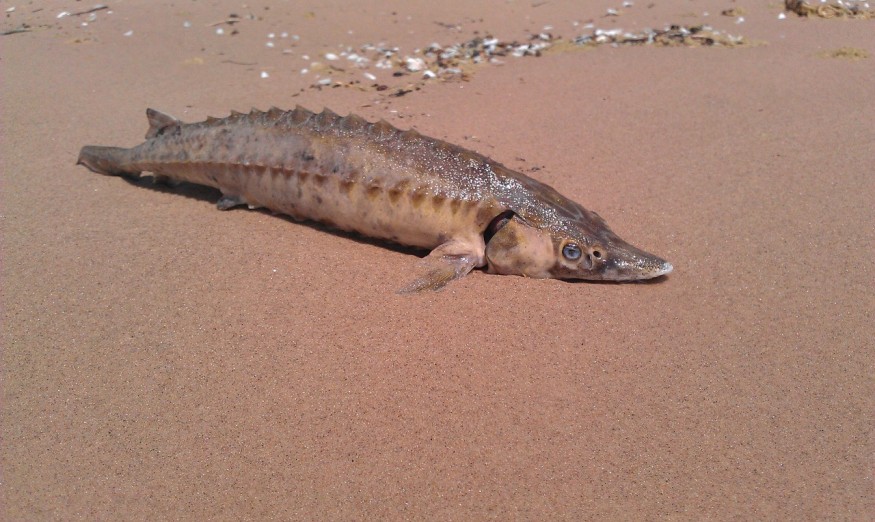A giant sturgeon believed to be more than a century old has been caught in Fraser River in British Columbia, Canada, and was immediately released back to the wild after putting a tag on it to track its movements.
Sturgeons are related to the paddlefish and are thought to evolve from an earlier group of fish called palaeonisciforms that appeared about 419 million years ago, at the end of the Silurian Period. These gentle giants have been around since the Jurassic Period; that is why they are sometimes called the "living dinosaur."

A Catch of A Lifetime: 600-Pound Sturgeon Tagged, Released Back to the River
In a video shared on social media, Yves Bisson said that he had just made the catch of a lifetime on March 6 after capturing the 10-feet long white sturgeon. He and fellow fisherman Dan Lallier said they caught the fish in the Fraser River and were shocked to see the enormous living dinosaur untagged, which means that it has probably never been caught.
"Check this out... this fish is 10 and a half feet [long], probably 580, 600 pounds," Bisson said in the video. "We were just able to tag it, so it's probably never been caught and now we're going to release it."
Around 50% of the 27 species of surgeons are classified as critically endangered in the world, Newsweek reported. These huge fish have faced numerous threats, such as overfishing and habitat loss, since the age of dinosaurs. They are also farmed and harvested for their eggs used for caviar.
White surgeons are primarily known to inhabit the Fraser River and are considered to be the largest and longest-living fish in North America. They can grow up to 20 feet and live for a century. White surgeons found in the river are tagged so that the Fraser River Sturgeon Conservation Society could track the population and health of the species.
Bisson regularly helps tag surgeons for the society's program that has recorded only a fraction of a number of what they used to be in the past before being threatened by overfishing and habitat loss.
Initiatives in Saving Sturgeons
According to World Wide Fund for Nature (WWF), sturgeons are the most endangered species in the world not only because of overfishing but also due to the flourishing illegal caviar trade. But the wildlife organization is hopeful of saving them and reviving their numbers for the benefit of the people and nature.
They are now working together with civil society, scientists, communities, law enforcement authorities and governments from different countries to save sturgeons that are economically and culturally important in every river basin. The organization aims to tackle rebuilding sturgeon populations, the illegal caviar trade, and enhancing the health of the river.
They are fighting the black market by collecting evidence of the illegal caviar trade and raising public awareness to advocate for more robust enforcement policies. They plan to build long-term solutions through collecting better data and monitoring, influencing local planning processes to prevent harmful new dams in the area, and adapting existing dams to sturgeon migration routes.
RELATED ARTICLE: Big Catch! Giant 100-Year-Old, 7-Feet Long Sturgeon Caught in Detroit
Check out more news and information on the Sturgeon in Science Times.












